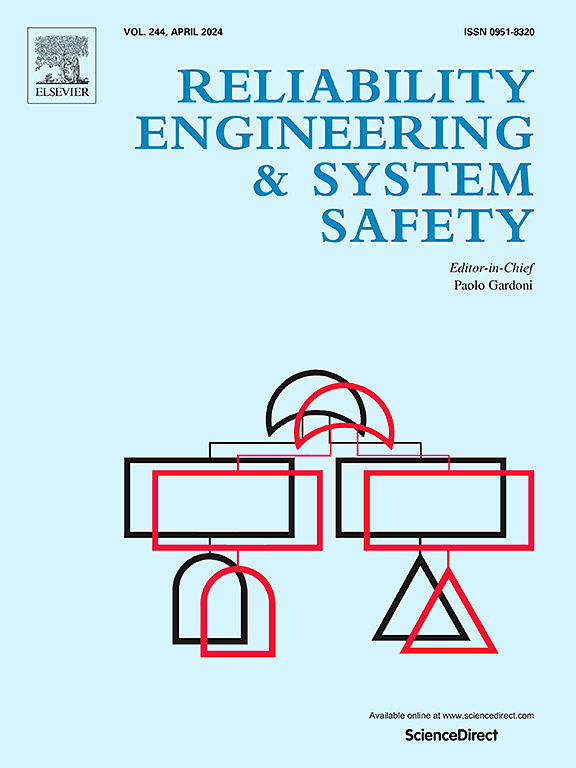基于CFD建模和机器学习的坦克火灾火焰行为预测新方法的开发和验证
IF 9.4
1区 工程技术
Q1 ENGINEERING, INDUSTRIAL
引用次数: 0
摘要
确保储油库安全涉及系统工程。坦克火灾是一种常见的事故类型,由于空中高度的限制,对油库造成了严重的威胁。本研究通过实验和计算流体动力学(CFD)模拟研究了空高对火焰形态、空气夹带和燃烧行为的影响。结果表明,燃料箱的高度对燃烧速度、火焰形态和空气夹带有显著影响。三种燃烧方式被确定为标高变化。然后将实验和模拟数据用于机器学习(ML)模型,该模型结合粒子群优化(PSO)和反向传播神经网络(BPNN)来预测质量燃烧速率和内部流场。输入数据集包括油箱直径、容积高度、实验质量燃烧速率以及CFD模型预测的内部流场。ML模型的预测结果与实验和数值数据吻合较好。结果表明,训练数据集的数量越多,预测越准确。该模型提供了一种快速有效的方法来预测燃烧行为,并支持在有限的实验和数值输入下对坦克火灾事故进行风险评估。本文章由计算机程序翻译,如有差异,请以英文原文为准。
Development and validation of a novel method to predict flame behavior in tank fires based on CFD modeling and machine learning
Ensuring storage tank farm safety involves systematic engineering. Tank fire with a large ullage height is a common type of accident and poses a serious threat to tank farms due to the air restrictions by ullage height. This study investigates the impact of ullage height on flame morphology, air entrainment, and burning behaviors through experiments and computational fluid dynamics (CFD) simulations. Results showed that ullage height of the tank significantly affect burning rate, flame morphology and air entrainment. Three burning regimes were identified as ullage height changes. Experimental and simulation data were then used in a machine learning (ML) model, which combines particle swarm optimization (PSO) and back-propagation neural networks (BPNN) to predict the mass burning rate and internal flow field. The input datasets included the tank diameter, ullage height, experimental mass burning rate, and the internal flow field predicted by the CFD model. The predicted results by the ML model agree well with the experimental and numerical data. It was shown that the larger number of the training datasets, the more accurate predictions. The new model provides a fast and efficient way to predict the burning behaviors and supports risk assessment for tank fire accidents with limited experimental and numerical inputs.
求助全文
通过发布文献求助,成功后即可免费获取论文全文。
去求助
来源期刊

Reliability Engineering & System Safety
管理科学-工程:工业
CiteScore
15.20
自引率
39.50%
发文量
621
审稿时长
67 days
期刊介绍:
Elsevier publishes Reliability Engineering & System Safety in association with the European Safety and Reliability Association and the Safety Engineering and Risk Analysis Division. The international journal is devoted to developing and applying methods to enhance the safety and reliability of complex technological systems, like nuclear power plants, chemical plants, hazardous waste facilities, space systems, offshore and maritime systems, transportation systems, constructed infrastructure, and manufacturing plants. The journal normally publishes only articles that involve the analysis of substantive problems related to the reliability of complex systems or present techniques and/or theoretical results that have a discernable relationship to the solution of such problems. An important aim is to balance academic material and practical applications.
 求助内容:
求助内容: 应助结果提醒方式:
应助结果提醒方式:


